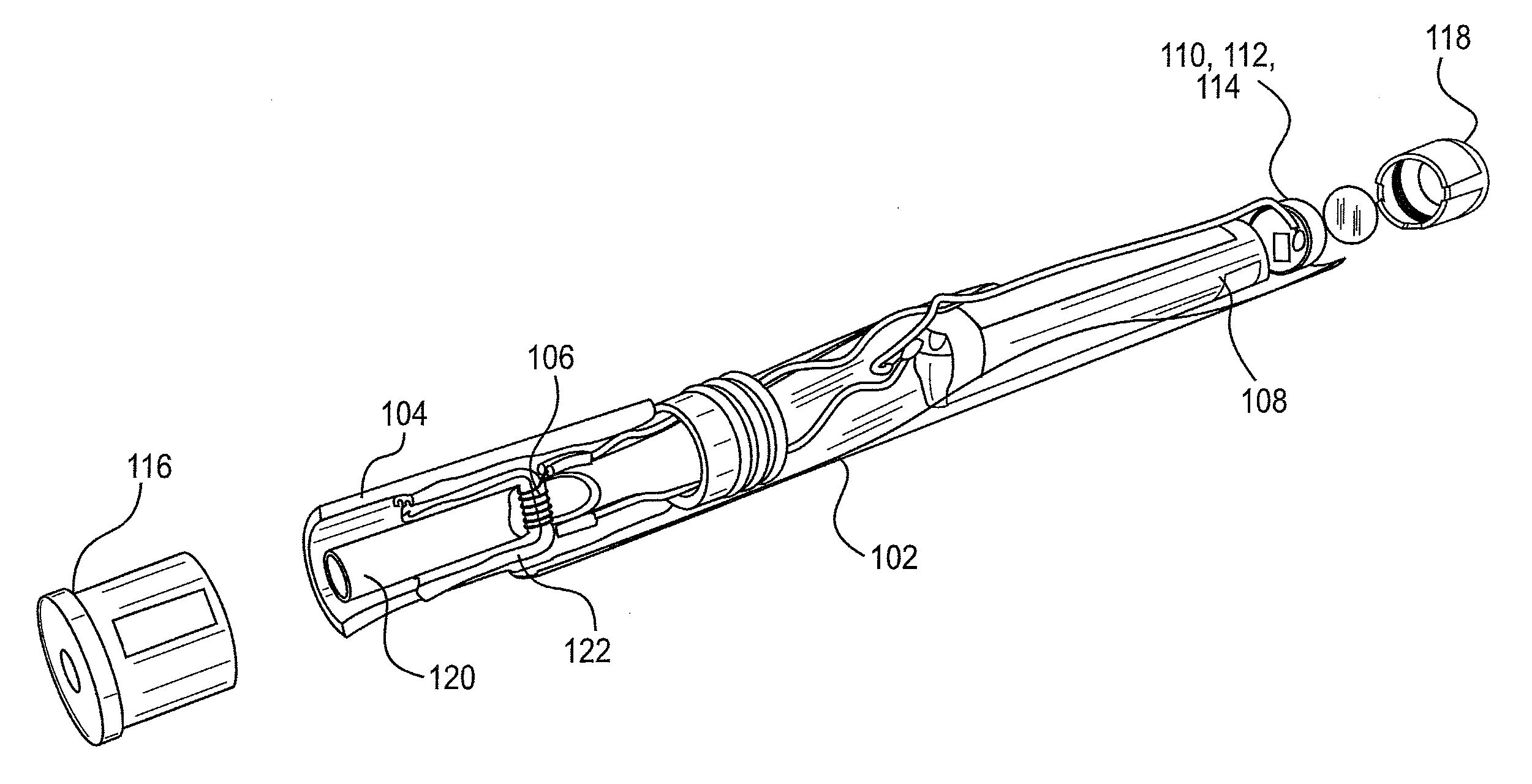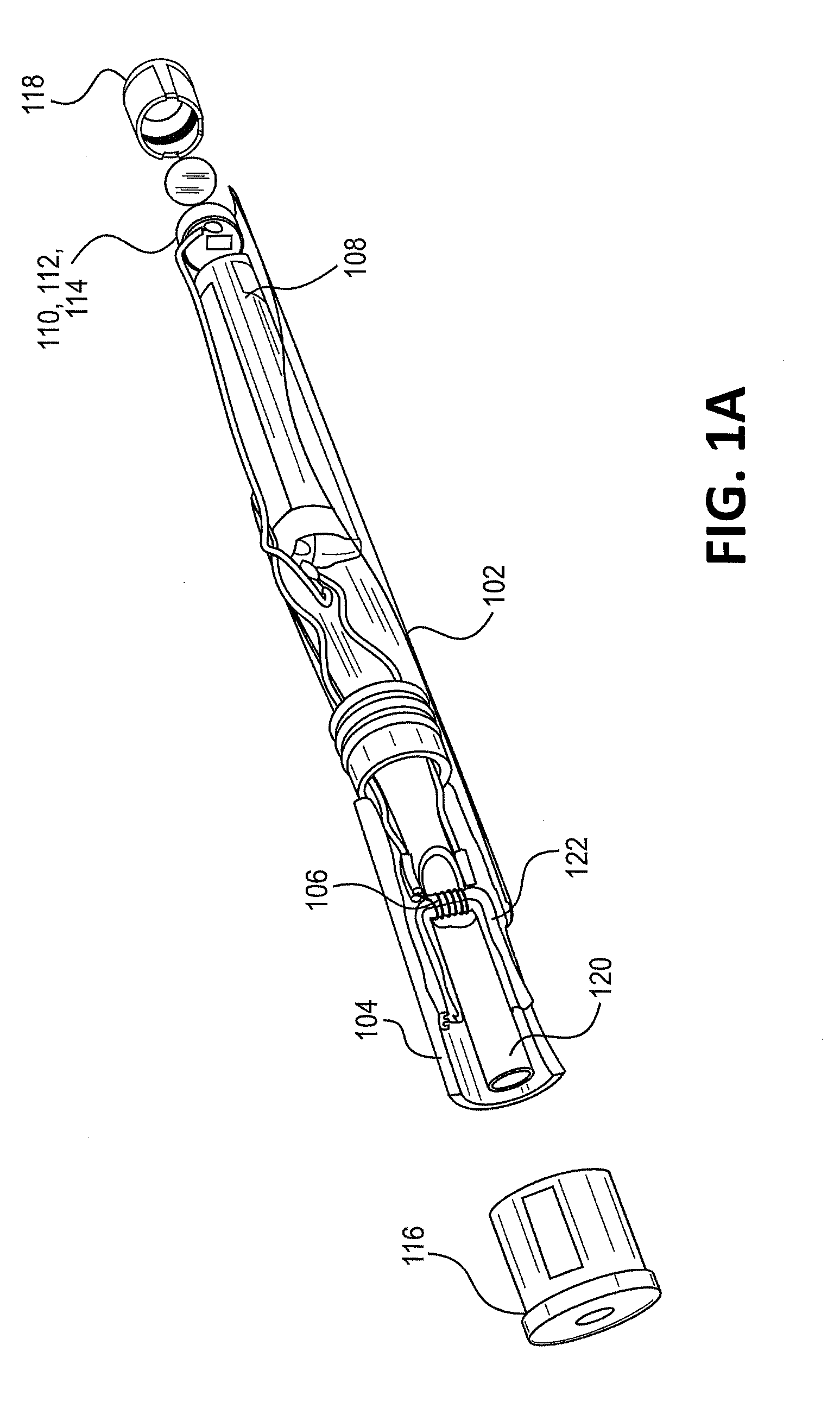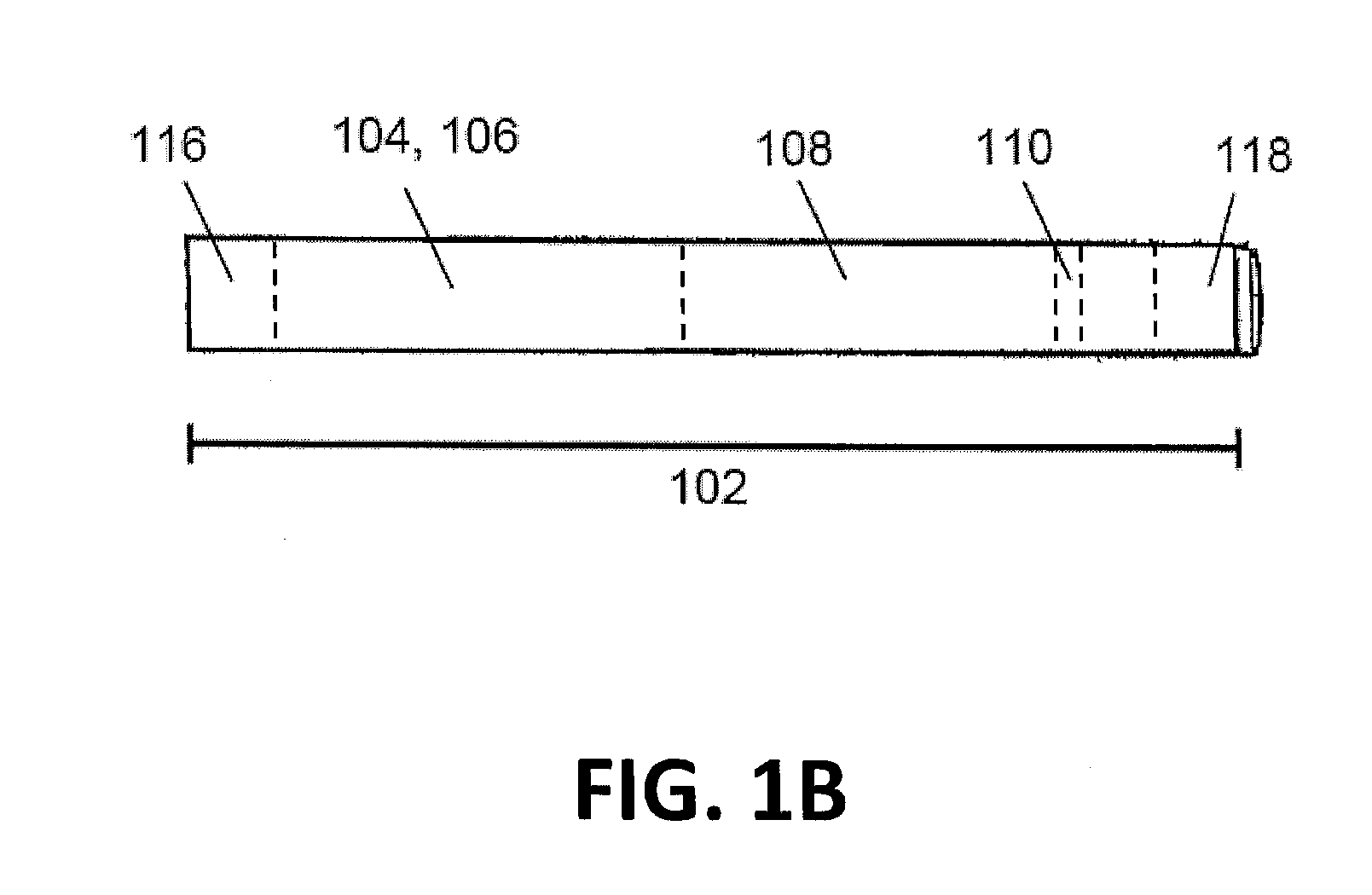Compositions, devices, and methods for nicotine aerosol delivery
a nicotine aerosol and composition technology, applied in tobacco treatment, food science, tobacco, etc., can solve the problems of nicotine exchange speed, high gaseous fraction, and low efficiency, and achieve the effect of reducing degradation, constant effective voltage of the battery, and constant rate of vaporization of the vaporizing devi
- Summary
- Abstract
- Description
- Claims
- Application Information
AI Technical Summary
Benefits of technology
Problems solved by technology
Method used
Image
Examples
example 1
Gas / Particle Partitioning
[0108]Compositions (“LC0”, “LC2”, and “LC3”) were prepared according to Table 2 by combining glycerol (≧99.5% w / w, Aldrich), propylene glycol (≧99.5%, Aldrich), nicotine (≧99%, Aldrich), and a flavor mixture. DL-lactic acid (USP, Fisher) was added to compositions LC2 and LC3 as ion pairing agent. The pH of each composition was measured with a standard electrochemical pH meter calibrated for accuracy in the pH range from 6-10. The observed pH ranged from 9.6 (LC0) to 7.4 (LC3).
TABLE 2CompositionsPropyleneFlavorMolar ratioNicotineGlycerolglycolmixturelacticComposition(% wt.)(% wt.)(% wt.)(% wt.)acid:nicotineLC04.547.547.50.50 (no acid)LC24.446.746.70.52:3LC34.446.346.30.51:1
[0109]Each composition was loaded into an electronic cigarette (Kings, NJOY, Inc.) by saturating a fibrous reservoir with the composition liquid to test gas / particle partitioning in aerosols generated from the composition. Gas / particle partitioning of nicotine was measured according to the ...
example 2
Dose-Response
[0112]Compositions (“Product A,”“Product B,” and “NJ-001”) were prepared according to Table 4 by combining glycerol (≧99.5% w / w, Aldrich), propylene glycol (≧99.5%, Aldrich), nicotine (≧99%, Aldrich), and a flavor mixture; DL-lactic acid (USP, Fisher) was also added as an ion pairing agent in Products A and B.
TABLE 4CompositionsPropyleneFlavorMolarNicotineGlycerolglycolmixtureratio lacticComposition(% wt.)(% wt.)(% wt.)(% wt.)acid:nicotineProduct A4.446.946.90.51:2Product B4.446.546.50.55:6NJ-0014.547.547.50.50 (no acid)
[0113]Each composition was loaded into an electronic cigarette (Kings, NJOY, Inc.) by saturating a fibrous reservoir with the composition liquid, and the electronic cigarettes were administered to subjects for dose-response studies. Baseline data for the total 26 subjects are shown in Table 5. The subjects evaluated both Product A and Product B during a one week ad libitum trial outside the clinical setting, then abstained from all forms of nicotine for ...
example 3
Alkaloid Mixture
[0123]Compositions 1-12 are prepared according to Table 6 by combining nicotine (≧99%, Aldrich) with a solvent mixture comprising glycerol (≧99.5% w / w, Aldrich), propylene glycol (≧99.5%, Aldrich), and / or PEG 400 (Aldrich); DL-lactic acid (USP, Fisher); and a flavor mixture. Menthol is added to compositions 2, 4, 6, 8, 10, and 12. An alkaloid mixture of myosmine, anatabine, and anabasine is added to compositions 7 and 8, wherein the mixture comprises myosmine in a 1:40 molar ratio with respect to nicotine (myosmine:nicotine), anatabine in a 1:40 molar ratio with respect to nicotine (anatabine:nicotine), and anabasine in a 1:300 molar ratio with respect to nicotine (anabasine:nicotine). The pH of each composition is measured with a pH meter; pH values range from 7.7 to 7.8.
TABLE 6CompositionsFlavorings(0.5%generalflavor agents +NicotineGlycerolPropylenePEG 400Lactic acidadditional(% wt)(% wt.)glycol (% wt.)(% wt.)(% wt.)as listed)13.047.647.6—1.423.046.546.5—1.4Mentho...
PUM
 Login to View More
Login to View More Abstract
Description
Claims
Application Information
 Login to View More
Login to View More - R&D
- Intellectual Property
- Life Sciences
- Materials
- Tech Scout
- Unparalleled Data Quality
- Higher Quality Content
- 60% Fewer Hallucinations
Browse by: Latest US Patents, China's latest patents, Technical Efficacy Thesaurus, Application Domain, Technology Topic, Popular Technical Reports.
© 2025 PatSnap. All rights reserved.Legal|Privacy policy|Modern Slavery Act Transparency Statement|Sitemap|About US| Contact US: help@patsnap.com



